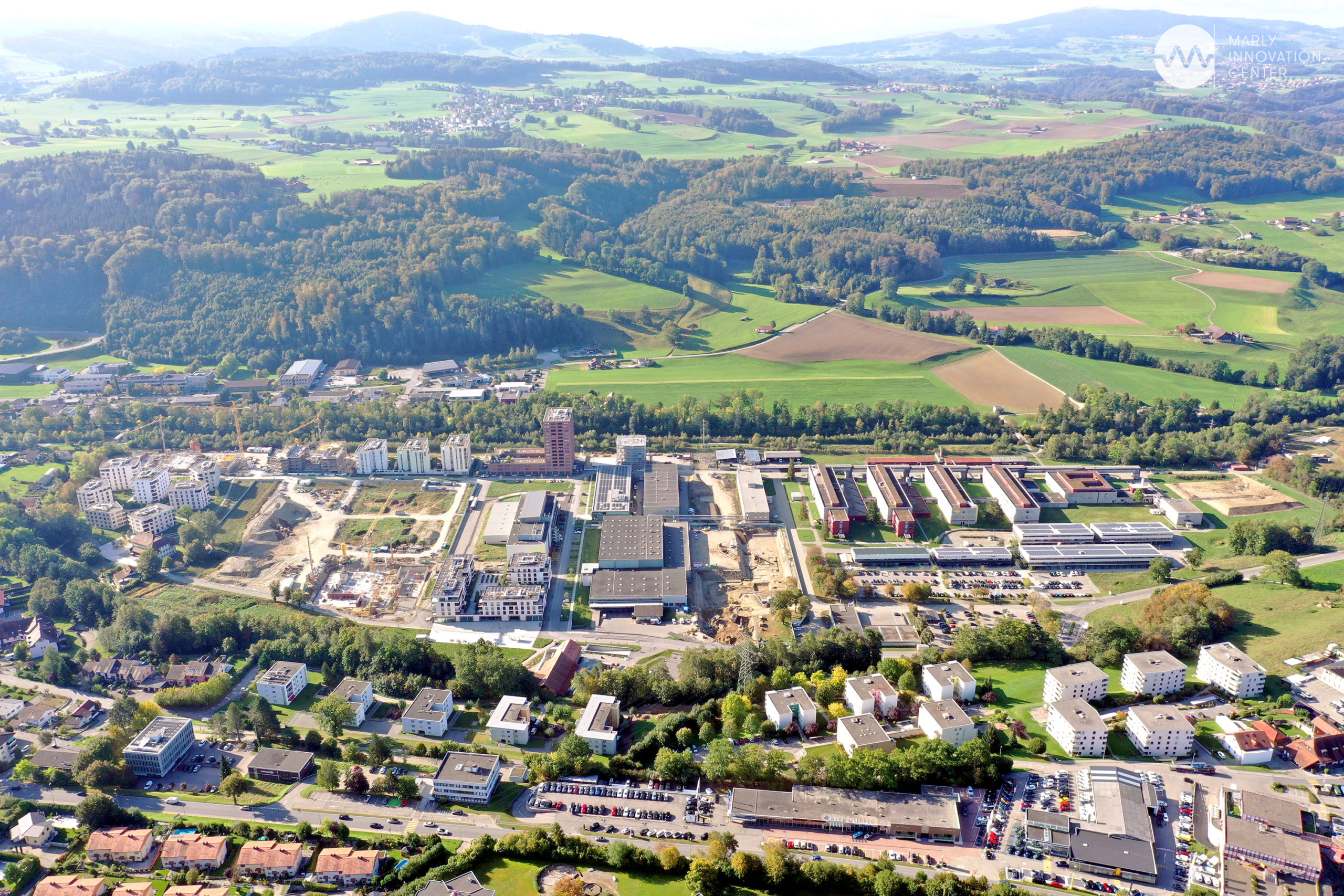
How Switzerland maintains a competitive industrial edge
 Aerial view of the Marly Innovation Center, a technology hub in the canton of Fribourg focused on industrial innovation, applied research, and supporting high-value start-ups. | © Marly Innovation Center
Aerial view of the Marly Innovation Center, a technology hub in the canton of Fribourg focused on industrial innovation, applied research, and supporting high-value start-ups. | © Marly Innovation Center
Resilience, innovation, and sustainability: industry remains a pillar of the economy in Western Switzerland, driven by high value-added sectors.
The interview below with Thomas Bohn, CEO of GGBa, was conducted by Marie-Agnès Nicolet for Le Magazine des Professions Financières et de l’Économie. He discusses the strength of Switzerland’s industrial fabric and the key levers that support its development.
There’s a lot of talk about reindustrialization in France. What is the situation in Switzerland, particularly in the cantons covered by GGBa? How does industry compare to other sectors? How is it evolving, and which industrial sectors are we talking about?
Switzerland—particularly the cantons covered by the Greater Geneva Bern area (GGBa), which include Bern, Fribourg, Neuchâtel, Vaud, and Geneva—has a strong and resilient industrial tradition. Unlike some European countries that have experienced significant deindustrialization, Switzerland has managed to preserve and modernize its industrial base by focusing on innovation, automation, and high value-added production.
The manufacturing sector accounts for approximately 20% of Swiss GDP—a significant share compared to other Western economies. In some GGBa cantons, like Neuchâtel and Bern, industry accounts for more than 35% of regional GDP, with watchmaking and micromechanics forming key economic pillars. The main industrial sectors in the region include pharmaceuticals and biotech, medical technologies, watchmaking, aerospace, automation, and precision manufacturing.
The strength of Swiss industry lies in continuous investment in research and development, often in collaboration with universities and universities of applied sciences. Digital transformation and Industry 4.0 initiatives are also enabling companies to boost productivity and remain globally competitive. Additionally, sustainability plays a central role in this industrial transformation, with a growing commitment to greener production processes and responsible resource management.
Key industrial sectors in the GGBa region include:
- Watchmaking and micromechanics: Traditionally strong in the region, these sectors are historical economic mainstays.
- Medical technologies and biotechnology: The area is home to a vibrant cluster known as the Health Valley, comprising over 1,000 companies and institutions active in life sciences.
- Machinery, equipment, and metal industry (MEM): This sector is crucial to the Swiss economy, contributing over 7% of national GDP and accounting for around 30% of exports.
- Chemical and pharmaceutical industry: Responsible for nearly 9% of Swiss GDP and about 50% of national exports, this sector includes many world-renowned companies active in the region.
How is the development of various industries financed in Switzerland?
Industrial development in Switzerland is supported by a robust and diversified ecosystem. Several key instruments are used to foster industrial growth:
Private financing: Swiss companies benefit from easy access to credit, thanks to a strong banking system and a dynamic capital market. Investment funds and institutional investors also play a crucial role in supporting innovative businesses.
Public support: The federal government and cantons offer a range of incentives:
- Innosuisse, the Swiss Innovation Agency, co-finances R&D projects in partnership with academic institutions.
- Loan guarantees for SMEs: This system helps small and medium-sized enterprises secure bank loans by providing guarantees.
- Technology Fund: Offers loan guarantees for companies whose innovations contribute to reducing greenhouse gas emissions.
European programs: Although Switzerland is not a member of the European Union, it participates in some European funding programs, such as Horizon Europe, though with limited association status.
Clusters and technology hubs: Innovation environments such as the Swiss Innovation Park West EPFL in Lausanne, the Swiss Innovation Park Biel/Bienne in Bern, the Marly Innovation Center in Fribourg, Biopôle in Vaud, Campus Biotech in Geneva, and Microcity in Neuchâtel enhance access to funding and foster collaboration among start-ups, SMEs, and large companies. These infrastructures provide an ideal environment for innovation and industrial development.
What is the role of the GGBa association in developing Switzerland’s industrial base? Is this experience transferable to other countries? What results have been achieved?
GGBa plays a vital role in attracting foreign investment and strengthening the industrial fabric of Western Switzerland. Its activities focus on several key areas:
- Prospecting and support: GGBa identifies and attracts foreign companies with high value-creation potential. It helps them establish operations in Switzerland by offering tailored support and connecting them with local partners.
- Networking and synergies: Thanks to its strong regional presence, the association connects foreign companies with key players from industry, academia, and research centers.
- Promotion and visibility: GGBa highlights the region’s industrial and technological strengths internationally, through events, communication campaigns, and strategic partnerships.
The GGBa model is entirely replicable in other countries, provided it is adapted to local specificities. The key to success lies in close collaboration between public authorities, companies, and research institutions. This approach has attracted leading companies across sectors such as pharmaceuticals, medtech, aerospace, and electronics.
The results are tangible: each year, GGBa supports the establishment of dozens of international companies in Western Switzerland, generating hundreds of skilled jobs and boosting the competitiveness of the local industrial ecosystem. By combining sector-specific expertise with a personalized approach, GGBa actively contributes to Switzerland’s growth and long-term prosperity.

